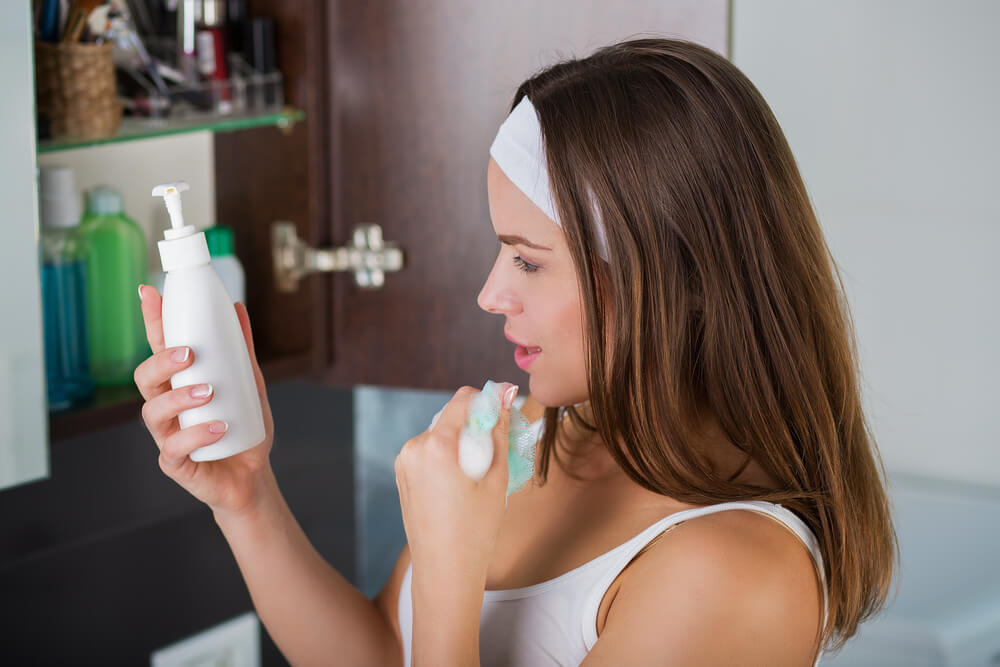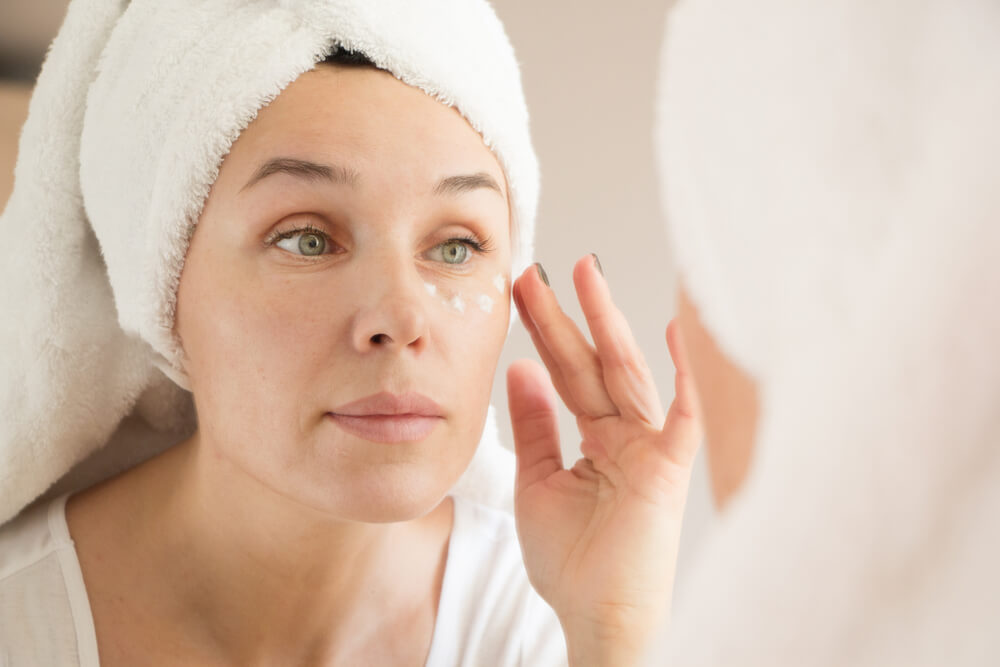With temperatures starting to rise, winter is finally over for another year. Chances are that your wardrobe is going through a bit of an overhaul at the moment – those thick and heavy layers can now be stored away in favor of those lighter and more summery alternatives.
Well, the same needs to be done with your skincare. Take a look at this Introstem guide on how to transition your skincare from winter to spring.
Spring Clean Your Skincare Cabinet

Do you remember the last time you properly went through your skincare cabinet and tossed out old and expired products?
This is something that so many of us are guilty of skipping out on. After all, surely that face cream will be fine for another month or so?
It could very well be, but, if that face cream or eye serum has expired, it could end up causing more harm than good. While it’s true that products simply become less effective after their expiry date, some ingredients can actually oxidize, which then damages your skin cells.
How to Spring Clean Your Skincare Cabinet
Start by emptying your cabinet of all of its products. Lay them out in front of you, so that you can easily see everything.
Then, check the expiry date of each one. If you can’t find this, look for a PAO number – it’s usually printed alongside a symbol of an open jar. PAO stands for a period after opening – it will usually be displayed as 24M or 36M. The M stands for months – this is how long the product is good for after it has been opened. You’ll find this on all Introstem products.
If you can’t find a PAO number or an expiry date and cannot remember when you opened the product, it’s time to bin it.
Now, in addition to throwing out products that have already expired, take note of those that are expiring in the next few months. With spring being upon us, your skincare routine is going to change (which you’ll learn more about below).
If you have any products that you won’t be using over the summer, but that will expire before next winter, you may want to throw those out too. This will save you from forgetting about their expiry date and accidentally using them again, and it also means that you won’t need to go through all of your products yet again in the autumn.
Lighten Up on the Moisturizer
The winter air can be extremely drying. This causes people to turn to a richer and thicker moisturizer, which helps the skin to deal with the cold and dryness.
However, come spring, it’s time to lighten this up. Not only is the air around you becoming increasingly humid, but your skin also produces more sebum as temperatures rise. Both of these factors mean that transepidermal water loss, which is the rate at which moisture evaporates out of your skin, is drastically reduced in the warmer months.
For some of you, especially those with sensitive or severely dry and dehydrated skin, a thick moisturizer may still be needed. However, for everyone else, consider opting for a lighter formula.
You can still use your thicker cream on those chilly and winter-like spring days but have a lighter lotion on hand too for those days that make it feel as though summer is already here. One great choice would be the Stem Cell Day Moisturizer from Introstem – it’s truly packed with potent compounds!
Start Using an Eye Cream

Are you someone who often falls susceptible to spring allergies?
These allergies tend to be triggered by all of the extra pollen in the air and can be extremely frustrating to deal with. Not only do you have to deal with sneezing, runny nose, and itchy skin, but allergies also cause the eyes to look red and puffy.
While an eye cream may not be able to help with sneezing, it can definitely work wonders when it comes to the look of puffy eyes.
If you find yourself prone to spring allergies year after year, stay one step ahead of the game this season by investing in an eye cream before your symptoms start to show.
How do you know if an eye cream will actually help with the appearance of your puffy eyes?
It’s easy – you take a look at its ingredients list. In this case, you need ingredients that will soothe and calm the feeling of inflammation while also perking up the appearance of your skin up so that it looks healthy. The Introstem Stem Cell Firming Eye Cream has everything you need, such as:
- Calendula extract
- Aloe vera extract
- Caffeine
- Hemp seed oil
- Green tea extract
- Grape stem cells
Apply it at the start of the day to keep visible puffiness at bay, or use it once your allergies start to flare up – it’s great for keeping the skin feeling calm and happy.
Switch to a Lighter Cleanser
Remember we talked about how a lighter moisturizer could be more beneficial for your skin in the spring and summer?
Well, the same applies to your cleanser too.
Rich, creamy, and milky cleansers are often recommended for the winter months. The skin is naturally more sensitive in the winter, so a milder cleanser is the best way to keep it happy while it’s dealing with tougher environmental conditions.
However, in the spring and summer, your skin will be producing more oil. You need a cleanser that’s able to effectively cut through any excess, without weighing your skin down. So, look for lighter formulas, such as the Introstem Stem Cell Mousse Cleanser.
Don’t forget – your cleanser should always be followed up by a toner, no matter the time of year.
Don’t have a toner that you love yet?
Try the Introstem Stem Cell Facial Toner. This decadent formula feels extremely hydrating and soothing. It’s also alcohol-free, meaning that it won’t dry your skin out in the way that so many other toners will!
Double Up on the SPF

Let’s get one thing straight – SPF is something that you should be using throughout the year, even in the darkest days of winter. UV rays cause their damage year-round – you’re never really safe.
However, you’re probably going to be spending more time outdoors in the spring and summer than you do in the winter. This means that all of those winter days that saw you applying just one layer of SPF in the morning, without reapplying later in the day, simply won’t cut it anymore.
It cannot be stressed enough how damaging the sun is to your skin. Yes, you may need it for your daily vitamin D top-up, but anything more than 10-15 minutes will lead to some serious problems. Everything from the appearance of dark spots to visible wrinkles to saggy-looking skin to skin cancer can be attributed to sun exposure – none of this is what you want to be dealing with.
If you don’t yet have a go-to sunscreen that you love, now is the time to find one. Spend time exploring the different brands and their offerings before you pick a formula that best suits your skin.
Wondering if you can just use a moisturizer with SPF instead?
Technically, yes. If a moisturizer claims that it provides SPF 30 protection, like our Stem Cell Active Defense SPF 30, then it can. However, you need to be using it in the right way. This means using about a nickel-sized dollop of product for your face – not just in the morning, but also each time you reapply your sunscreen.
As much as you may love soaking up the sun, try to keep your skin as protected as possible, especially now that you’ll be seeing so much more of the sun. Long-sleeved clothing can provide a physical barrier between your skin and the sun’s UV rays, while a wide-brimmed hat and sunglasses offer precious protection to the more delicate parts of your face.
Use Water-Based Serums
As mentioned, your skin naturally produces more oil in the warmer months. So, unless you have very dry skin, you don’t really need to be adding more oil on top of this.
Of course, some oils, such as hemp seed oil, are fantastic, no matter the season. However, many products will also contain heavier oils that won’t do your skin any favors in the spring and summer. Overload your skin with oil and your pores will end up clogged, leading to breakouts.
You don’t want to cut oils out of your skincare routine completely, but it could be a good idea to take a closer look at the serums that you’re using.
Serums are usually either oil-based or water-based. They’re very rarely both, since oil and water repel each other, meaning that the formula wouldn’t mix properly in the bottle.
If you’re using an oil-based serum, try swapping it for a water-based formula. It will feel much lighter on your skin but just as hydrating, especially if you go for one that is also packed with vitamins and botanicals.
Get Masking

While the winter months are a great time to use moisturizing masks, spring is when you need masks to rejuvenate and brighten the look of your skin. After all, spring is synonymous with newness and freshness, so it only makes sense for the appearance of your skin to reflect this too.
Exfoliating is usually one go-to method for getting rid of that winter dullness to make way for a springtime glow. However, chances are that you’re already doing this, so let’s talk about masks instead.
Many view them as an indulgent treat, but they really can work magic on your skin.
Face masks are packed with high concentrations of active ingredients. The way in which masks are designed to push their ingredients into the skin allows those deeper skin cells to also benefit.
Even if you already regularly mask, it’s always a good idea to mix things up a bit. Add a couple more masks into your skincare routine – your skin will thank you!
Need some mask inspiration?
Try the Introstem Hydro Transforming Mask – it’s packed with botanical extracts and cutting-edge compounds that will leave your skin looking lifted and radiant. The ThermoStem Mask is another popular option – this one has a unique self-heating effect that makes the masking experience feel so spa-like!
If you can’t make up your mind, give multi-masking a try. Apply different masks to different parts of your face – it’s a great way to truly customize your masking experience!
Goodbye, Winter!
Spring is a transitional month, not only for the world around us but also for our skin. It has to become accustomed to new environmental conditions, and this can be stressful. Fortunately, you now know everything that you need to do to help it with this transition, ensuring that your complexion looks its very best throughout the warmer season!



While using the syringe once a week can I use Roc with hyaloronic acid and retinol on the other nights?
Hi Sherri,
Yes, so long as your skin seems to be tolerating all of them fine.
– Introstem